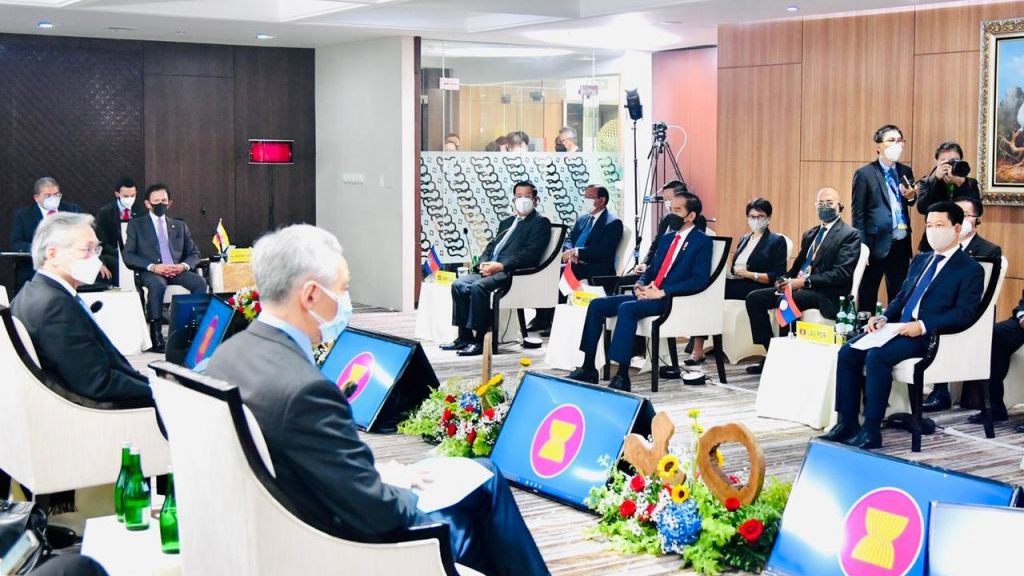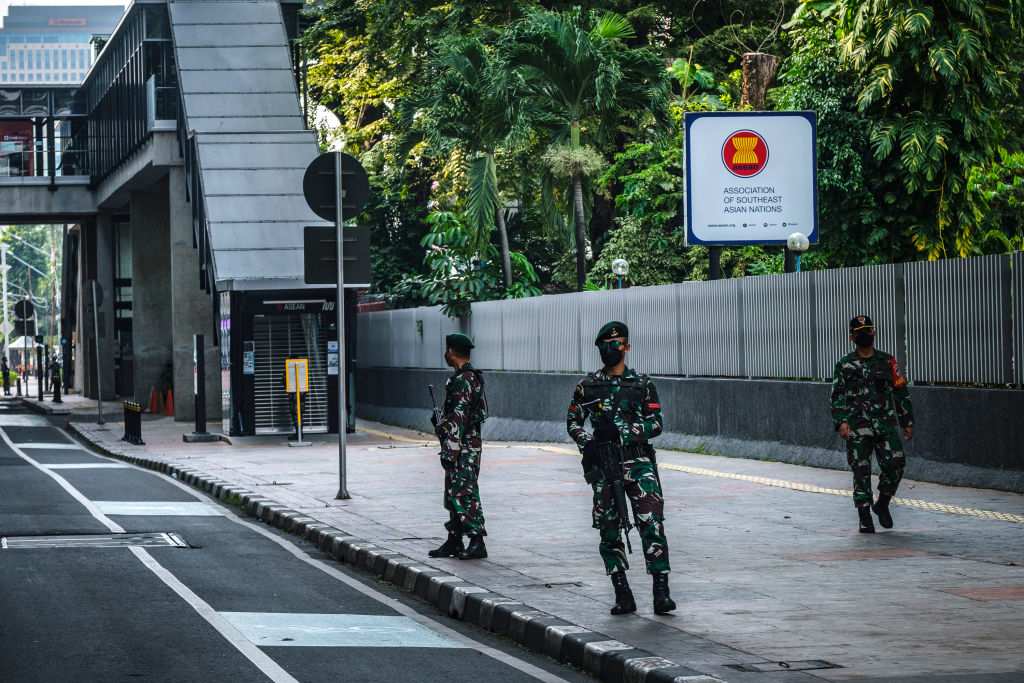
Leaders of ASEAN countries attend a meeting to discuss the Myanmar crisis, at the ASEAN Secretariat Building, Jakarta, Indonesia, April 24, 2021. /Getty
Leaders of ASEAN countries attend a meeting to discuss the Myanmar crisis, at the ASEAN Secretariat Building, Jakarta, Indonesia, April 24, 2021. /Getty
Editor's note: Hannan Hussain is a foreign affairs commentator and author. He is a Fulbright recipient at the University of Maryland in the U.S., and a former assistant researcher at Islamabad Policy Research Institute. The article reflects the author's opinions and not necessarily the views of CGTN.
On April 24, leaders of the Association of Southeast Asian Nations (ASEAN) met for a special summit on Myanmar, to help chart-out a plan for de-escalating tensions and resolving the country's months-long unrest.
"We acknowledged ASEAN's positive and constructive role in facilitating a peaceful solution in the interest of the people of Myanmar and their livelihoods," read out a statement from group chair Brunei. The summit ended with broad-based optimism for bringing Myanmar's crisis to a head – a noteworthy feat by any measure.
ASEAN's optimism stems from a set of converging diplomatic priorities between member states and Min Aung Hlaing, Myanmar's commander-in-chief and chair of its newly formed State Administration Council.
These include the initiation of political dialogue between contending parties in Myanmar, cessation of violence through broad-based domestic restraint, the facilitation of an ASEAN-backed mediation process, and pathways for immediate humanitarian assistance. The bloc concretizes it as the "five-point consensus" on Myanmar.
Longer history has shown that a multilayered approach to domestic reconciliation is a reliable standard for ASEAN on Myanmar. Look no further than 2015, when the union embraced Myanmar's bloc chairmanship in the face of forceful foreign campaigning, and gave its civil-military relations some balancing space within ASEAN's own reform push for geopolitical integration.
Fast forward to Saturday's summit. The consensus to give ASEAN a correspondence lead in Myanmar – to facilitate an immediate political reconciliation process – is particularly promising as it accelerates the bloc's willingness to lift communication barriers between all affected parties in the country, and identifies closely with ASEAN's bedrock principle of noninterference.
A limited success of such principled conflict-resolution support became evident in recent years as well, when ASEAN-led "assessment teams" were successfully dispatched to Myanmar in the absence of international peace initiative, well in line with the domestic political sentiment and delicate institutional arrangements of the country.
The team accomplished on a state level what the current ASEAN summit hopes to achieve nationally: deliver valuable preliminary needs assessment to support Myanmar in addressing major determinants of sustained public tensions, and give ASEAN a pulse of institutional as well as inter-party attitudes towards a "peaceful solution" for enduring peace.
Interestingly, based off this understanding is Indonesia's advocacy for an "ASEAN Special Envoy" position and its associated delegation. The move, now formalized, is a step in the right direction on several risk-mitigation levels.
Begin with the advantage of favorable national reception. Hlaing was quick to signal his confidence in ASEAN's proposed multilateral arrangement, making it known that "he was not opposed" to the bloc playing a constructive role in a mediation-based, all-party dialogue.

Indonesian soldiers guard the site of an ASEAN emergency meeting on Myanmar in Jakarta, Indonesia, April 24, 2021. /Getty
Indonesian soldiers guard the site of an ASEAN emergency meeting on Myanmar in Jakarta, Indonesia, April 24, 2021. /Getty
Of equal importance is Myanmar's delicate grouping of former lawmakers – broadly identified as the current opposition – because they are also engaged in parallel with ASEAN member states through independent channels, tacitly supportive of the bloc's mediation momentum.
Second, the arrangement provides a meaningful buffer against the ill-conceived and largely unilateral pressure tactics of select foreign powers.
After all, targeted economic sanctions on Myanmar, fragmentation of public protests, and unwarranted regime criticism have not reversed the country's simmering political crisis one-bit. Rather, these measures – a holdover from 2006 – are attempts to compress Myanmar's nuanced internal politics to the West's own warped sense of right and wrong. ASEAN presents itself with an opportunity to change that.
Certainty stems from the bloc's group statement which places "the interests of the people" of Myanmar – a stated regional priority – at the center of the forthcoming ASEAN delegation's peace-making mandate. Envoy ranks are expected to be arranged across the majority of the expanse of member states, so that officials visiting Myanmar ably synchronize their assumptions for long-term peace with ASEAN's historic discipline for mutual oversight.
Most importantly, a valuable backgrounder on Myanmar's pre-demonstration triggers and post-upheaval events was offered by Hlaing himself at the summit, giving strength to a culture of discourse transparency that is a defining takeaway from the ASEAN-led dialogue framework this week.
Thus understood, this very trust surplus could extend into Myanmar's diverse pool of political and institutional actors in due course as well. After all, ASEAN's insistence to act as an "inclusive" force on Myanmar gives a sense of how major proponents for peace within the country's borders may have a uniformed stake in determining their final blueprint for regionally-endorsed stability.
(If you want to contribute and have specific expertise, please contact us at opinions@cgtn.com.)

